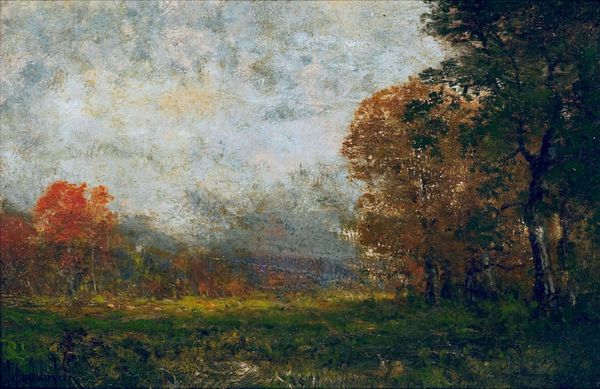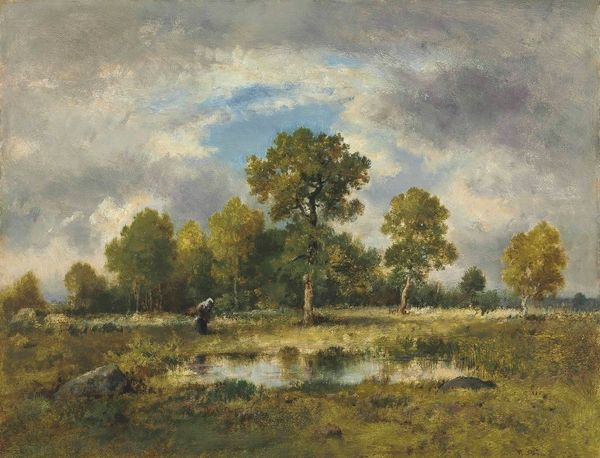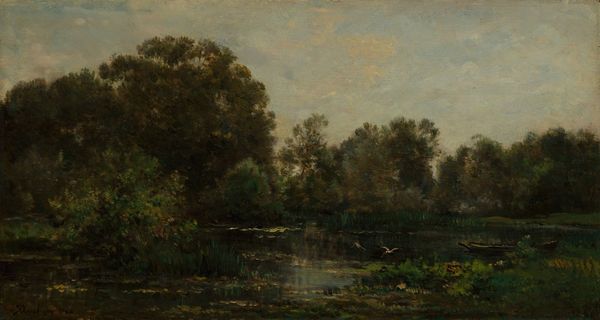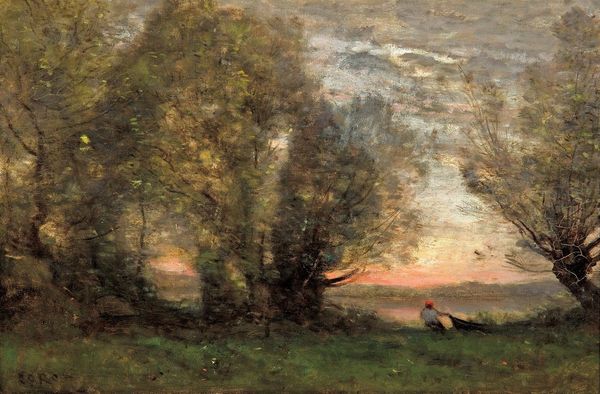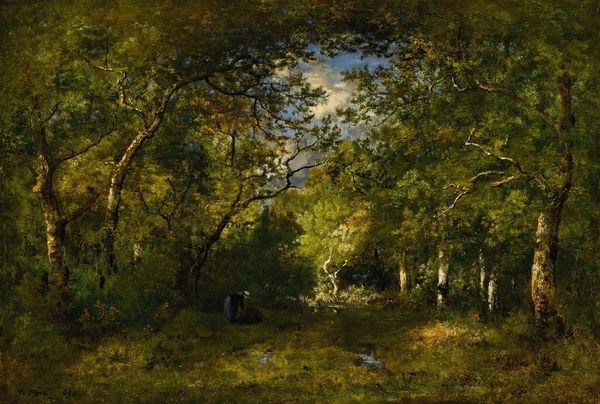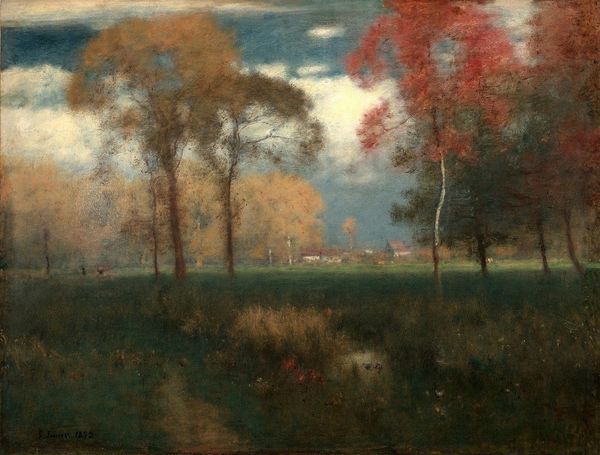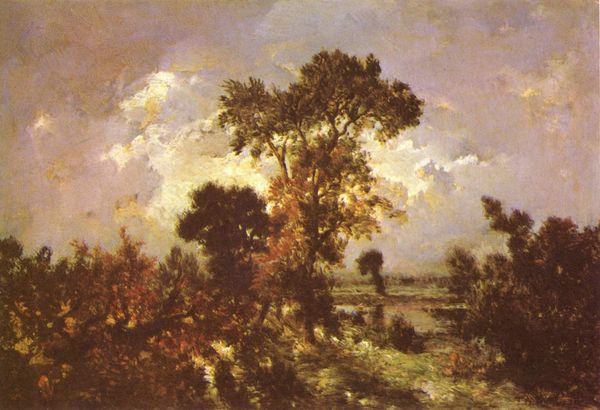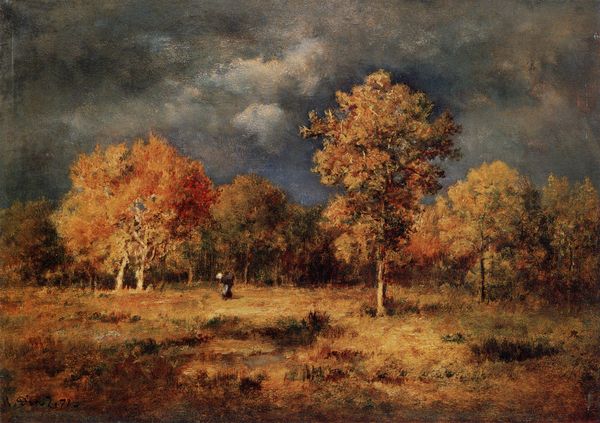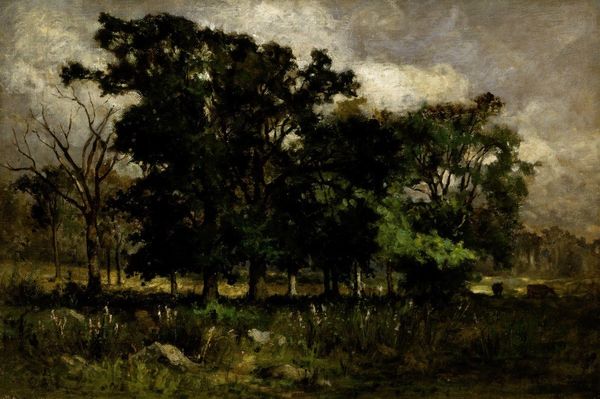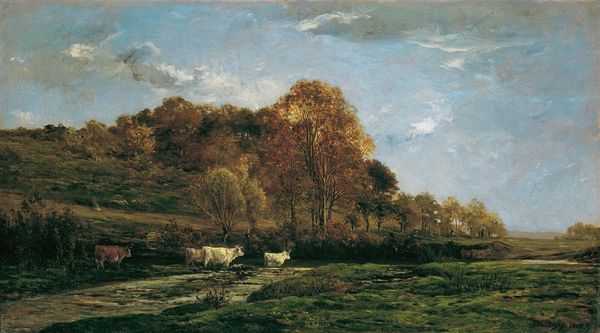
Copyright: Public domain
Editor: So, here we have Robert Julian Onderdonk’s “East Loyal Field” from 1908. It's an oil painting, and there's a real sense of vastness created by that open field leading to a distant copse of trees. What catches your eye about this work? Curator: Onderdonk's work speaks volumes about the evolving landscape of American art in the early 20th century. While his style is undeniably rooted in Impressionism, his paintings are less about capturing fleeting moments and more about creating a romanticized vision of the Texas landscape. Notice how the brushstrokes, while loose, contribute to a distinct feeling of depth. What effect do you think painting ‘en plein air’ had at the time on artists of his ilk, and on audiences? Editor: Well, the immediate experience must have brought a sense of realism that studio work couldn't. I imagine viewers, especially those familiar with the area, felt a connection to the place represented. Curator: Precisely. Onderdonk wasn’t just painting a landscape, he was crafting a narrative about the land, a narrative intertwined with ideas of progress, settlement, and even Manifest Destiny. How do you see that playing out here? Look closer: The subdued colors, almost a hazy atmosphere, add to a narrative of growth, and settlement in this field’s near vicinity, though still somehow… romantic and wild, would you agree? Editor: I do, it definitely softens what could be a hard view of development, or taming of nature. Curator: It served to both record and idealize. Artists like Onderdonk presented an image of the nation to itself, shaping perceptions and reinforcing cultural values. This landscape tradition carries heavy ideological baggage. Did you ever consider such implications, at first sight? Editor: Not really, I have to admit. But looking at it now, that historical aspect makes it more interesting, though complex. Curator: Indeed! Art is rarely just about what's on the canvas, but more importantly about who made it, for whom and why. I think that we did justice to these views today, no? Editor: Absolutely. I’ll never look at an American landscape quite the same way again. Thank you!
Comments
No comments
Be the first to comment and join the conversation on the ultimate creative platform.
